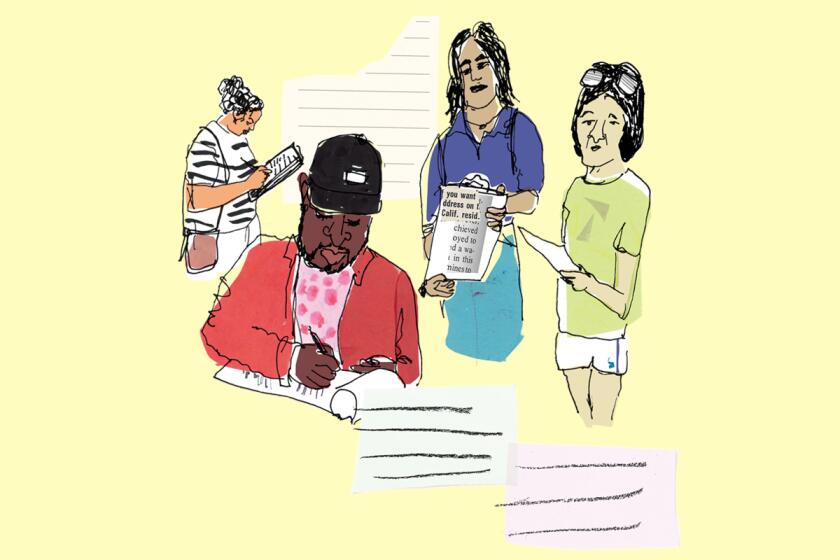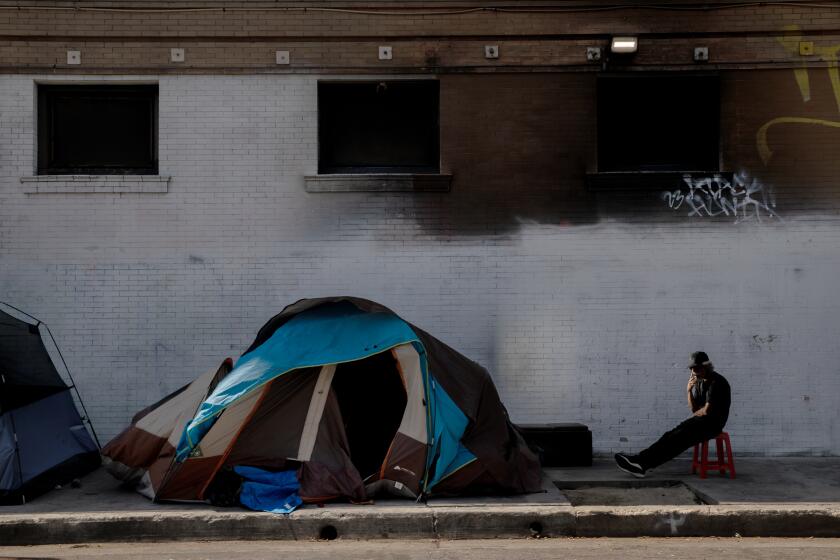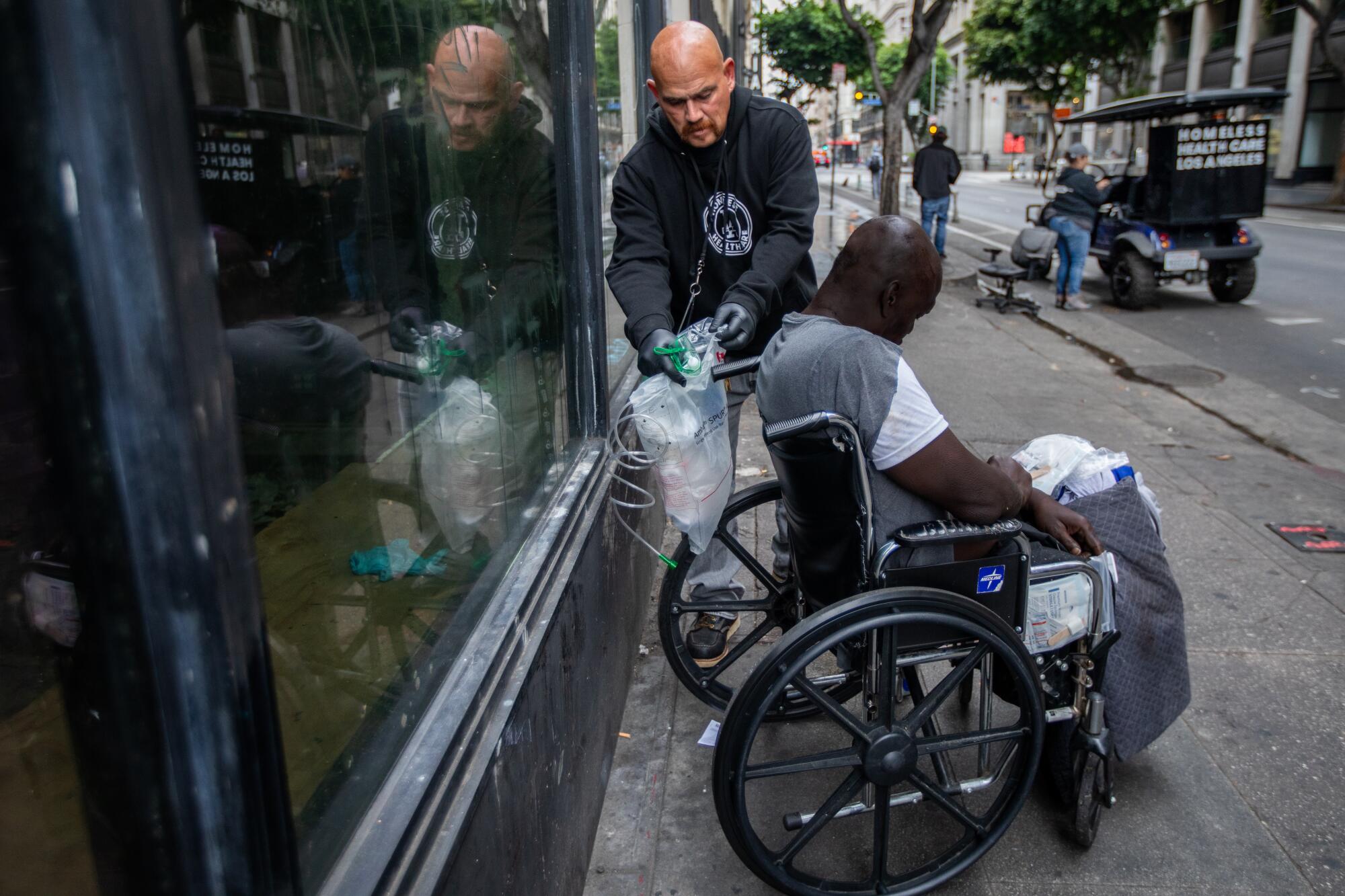
- Share via
Behind the steering wheel of the black cart, Simon Angel Melendrez scanned the streets of Skid Row, searching for anyone struggling to breathe.
When he saw a man slumped forward in his wheelchair on a downtown sidewalk, Melendrez pulled the cart over and jumped out. The man barely reacted when Melendrez shook his shoulder. Blood dripped from a wound on his brow.
“I’m going to check his oxygen right now,” he called to his co-worker Aurora Morales, grabbing a pulse oximeter to slip onto his finger.
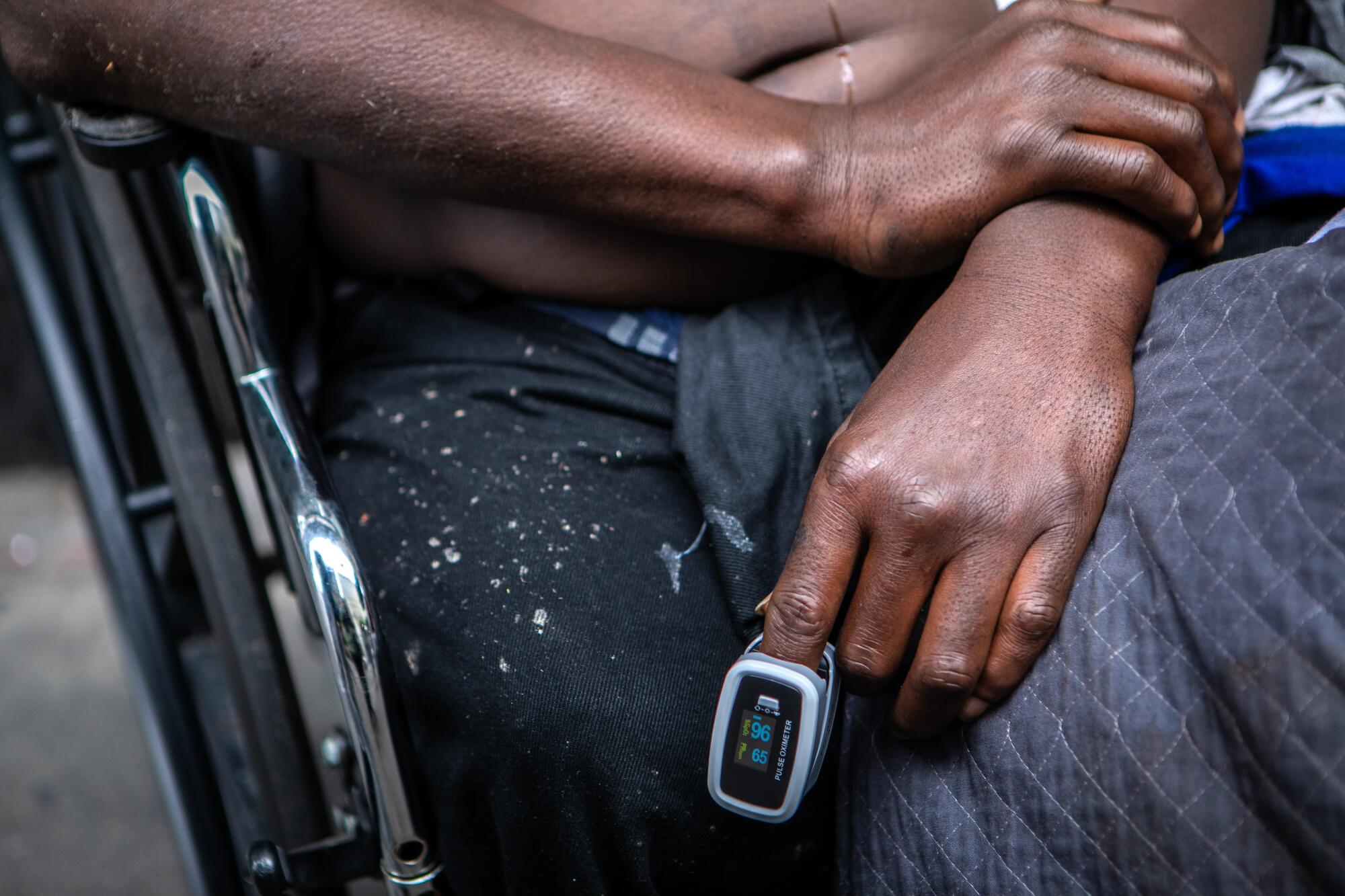
Morales squeezed the man’s shoulder and urged him to take deep breaths. His oxygen levels were bobbling up and down, the device attached to his finger showed. Melendrez hustled back to the cart and hoisted an oxygen cylinder onto the sidewalk.
Every day, the nonprofit Homeless Health Care Los Angeles sends out trained teams on carts to intervene and stop overdoses in and around Skid Row. They are armed not only with naloxone — a medicine commonly known as Narcan that can reverse the effects of an opioid overdose — but also cylinders of lifesaving oxygen.
The vital gas has been a game-changer for the teams as overdoses have surged, new threats arise in the drug supply and front-line workers worry about lingering effects even for overdose survivors. Naloxone has been crucial in saving lives because it can block the effects of opioids, but it can take minutes for someone to start breathing again as it takes action. Many overdoses also involve more than one drug, including non-opioids that do not respond to naloxone.
You can help someone get on the path to housing — and make your voice heard on issues of housing and homelessness. Learn how with Shape Your L.A.
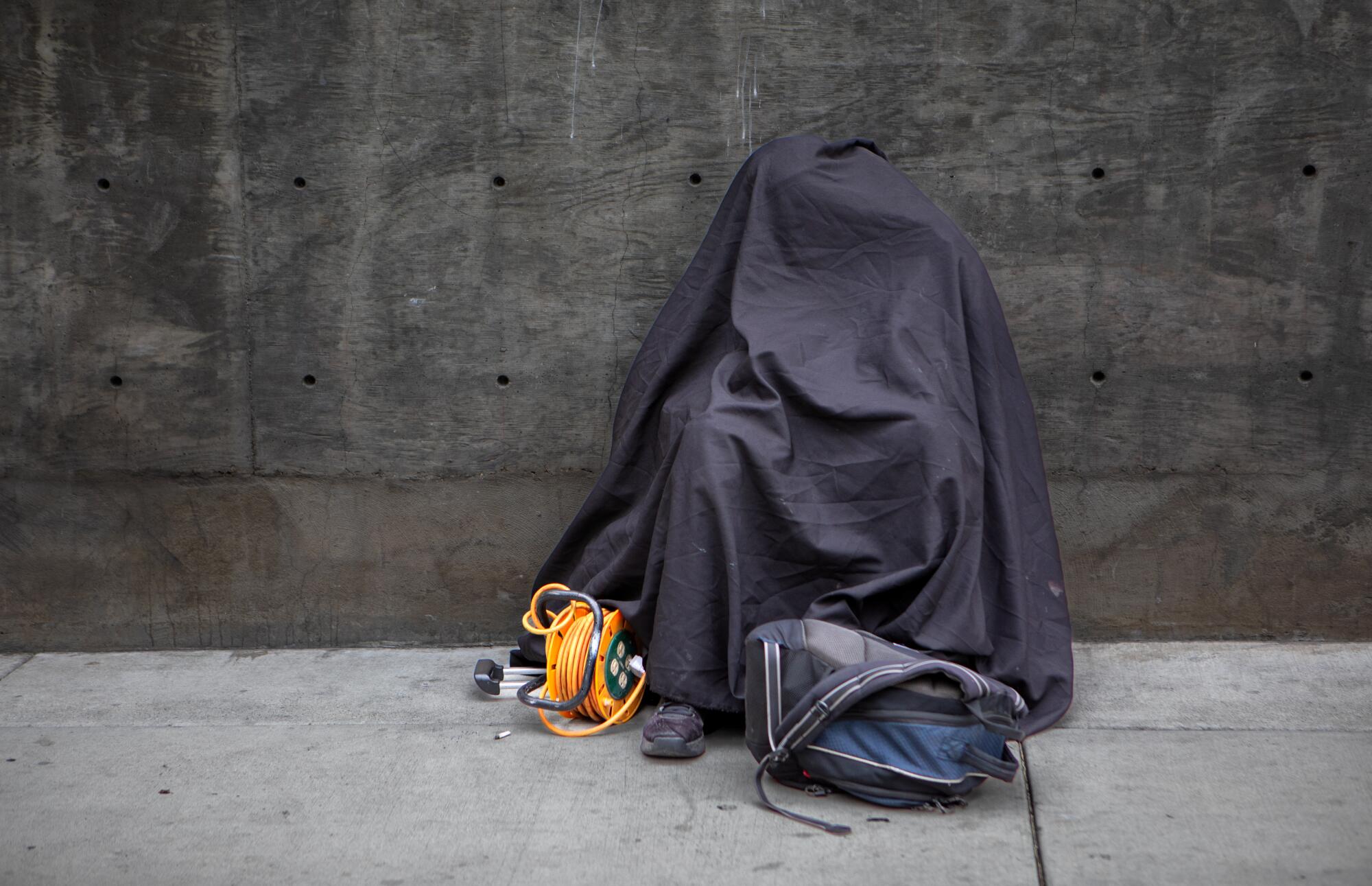
To help stabilize people faster, address a range of drug threats and spare the brain from worse damage, people trying to halt overdoses have also turned to oxygen. The simplest method is mouth-to-mouth breathing, but the Homeless Health Care teams use masks hooked up to oxygen cylinders, a tool more commonly seen on ambulances and in hospitals. L.A. County officials said they knew of no other community group in Southern California using oxygen to intervene in this way.
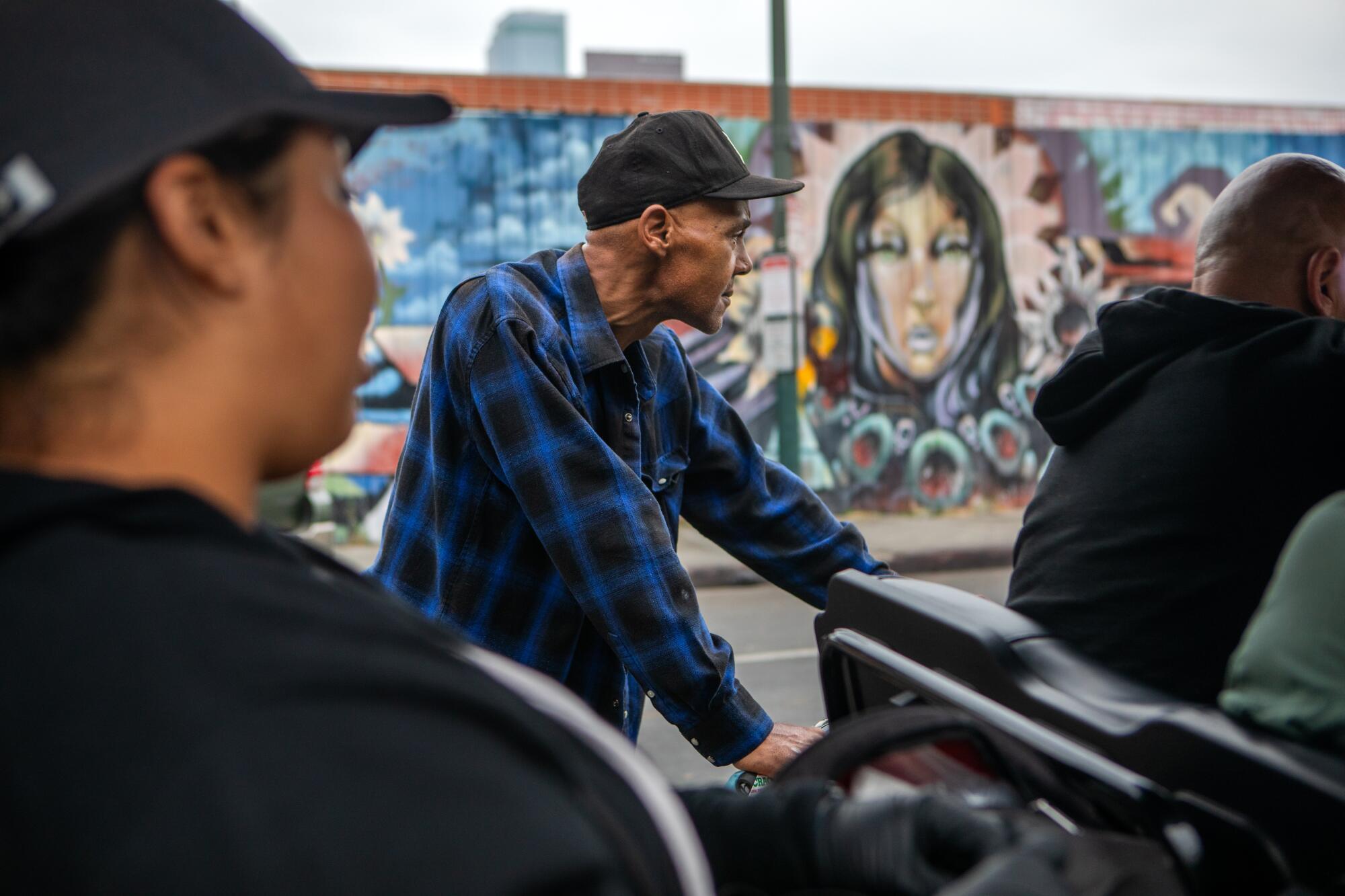
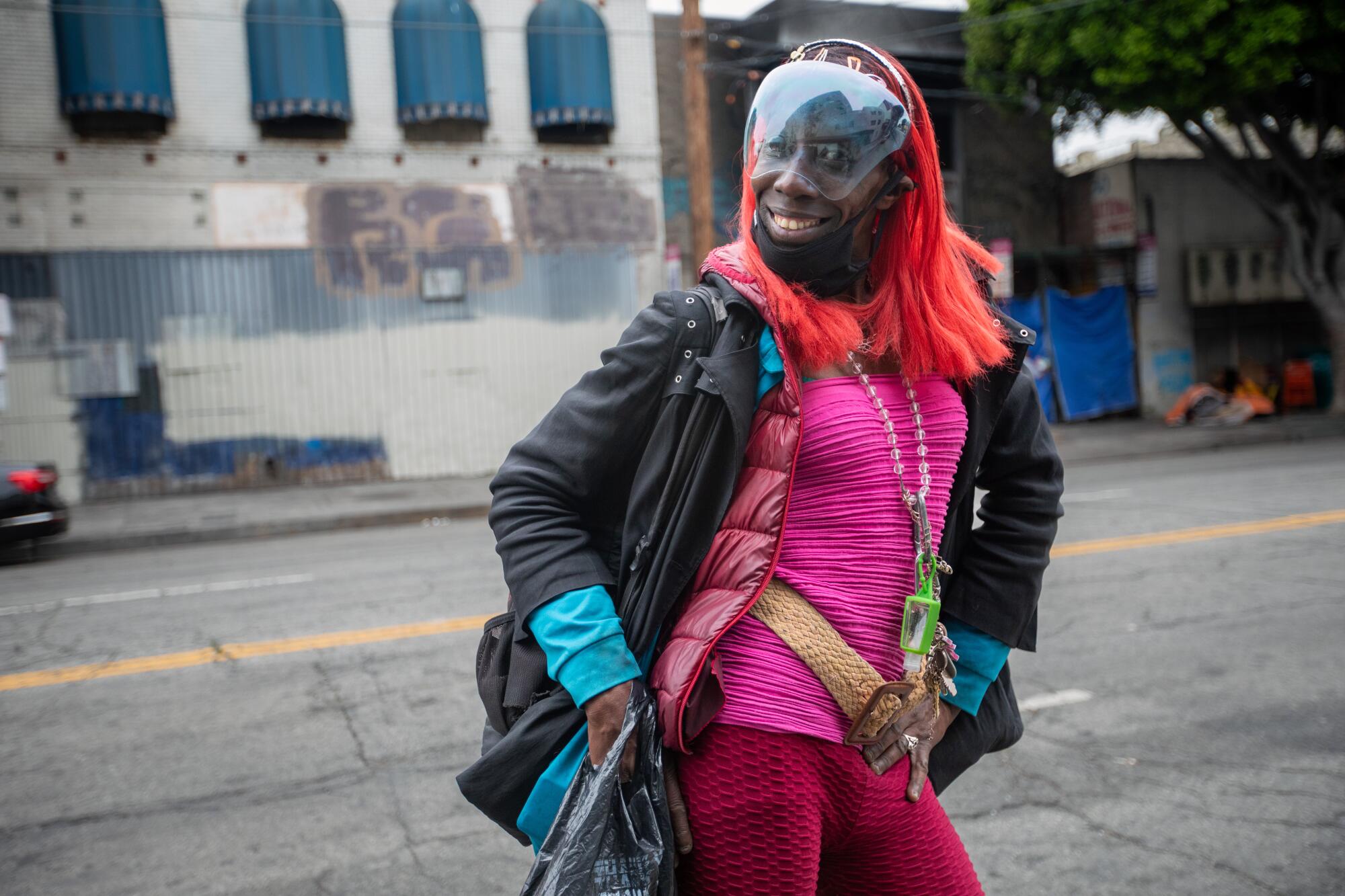
“This is the cutting edge of overdose response,” said Shoshanna Scholar, director of the harm reduction division at the L.A. County Department of Health Services, which provided the bulk of the roughly $500,000 in funding invested by county agencies to help launch the Skid Row effort.
Deadly overdoses more than doubled in the Skid Row area in just two years, exceeding 110 deaths in 2021, according to the public health department. In the 90013 ZIP Code, people have been dying of overdoses at more than 77 times the countywide rate when adjusted for age, state data show.
The Overdose Response Teams roll out daily between 9 a.m. and 3 p.m., circling a downtown route drawn based on where people tell them that overdoses have been happening. The black carts have become a familiar sight in Skid Row, where people also flag them down for Narcan, clean pipes and syringes, condoms and other harm reduction supplies. One man in black sunglasses, strolling up to the cart on a sweltering day, praised the team effusively as he stopped to get a pipe.
“The dope fiend needs love, man,” he said. “And you guys save lives too!”
As of July, the new teams had reversed 58 overdoses since they first launched on foot in December, with the monthly numbers rising sharply after the carts started rolling in February, according to Homeless Health Care. The Overdose Response Teams also assist people who are still breathing but not breathing well, using oxygen and other techniques such as pressing their shoulders to try to prevent them from ever reaching the point of needing Narcan.
“The idea is that with oxygen and support, you might not actually need to reverse an overdose at all,” said Dr. Brian Hurley, medical director of the substance abuse prevention and control division at the L.A. County Department of Public Health.
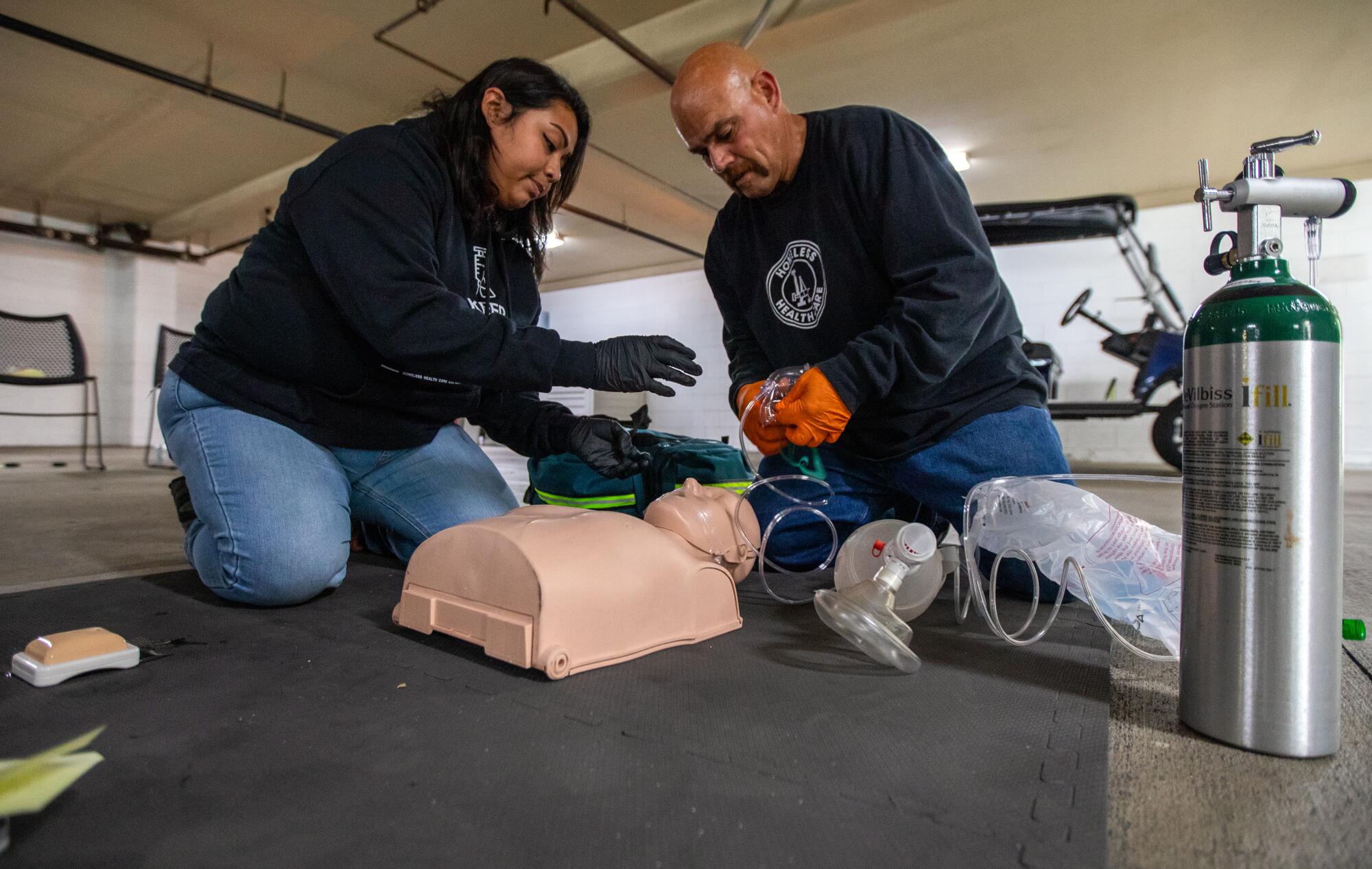
The Homeless Health Care teams undergo 16 hours of initial training and run regular eight-hour drills to keep up their skills, said Darren Willett, director of the Center for Harm Reduction run by the nonprofit. Melendrez and Morales practiced in a parking garage, ministering to a mannequin torso as Willett called out symptoms — “His color’s off, he’s not breathing” — and jotted down numbers on sticky notes to simulate readings for oxygen and heart rate.
Willett timed them as they rehearsed the steps to take within the first minute of encountering someone who had stopped breathing: Injecting the person with a dose of naloxone. Starting a stopwatch to know when to give the next dose. Using a pulse oximeter to measure oxygen levels and heart rate. Ensuring an airway is open with a device propped inside their mouth. Delivering the oxygen through a mask.
Homeless Health Care learned many of its overdose response strategies from OnPoint NYC, which operates New York City sites where people use drugs under supervision and get immediate treatment to prevent deadly overdoses. Kailin See, its senior director of programs, said an opioid overdose is fundamentally “a slow cessation of breath,” so “it makes sense that really your No. 1 tool should be oxygen.”
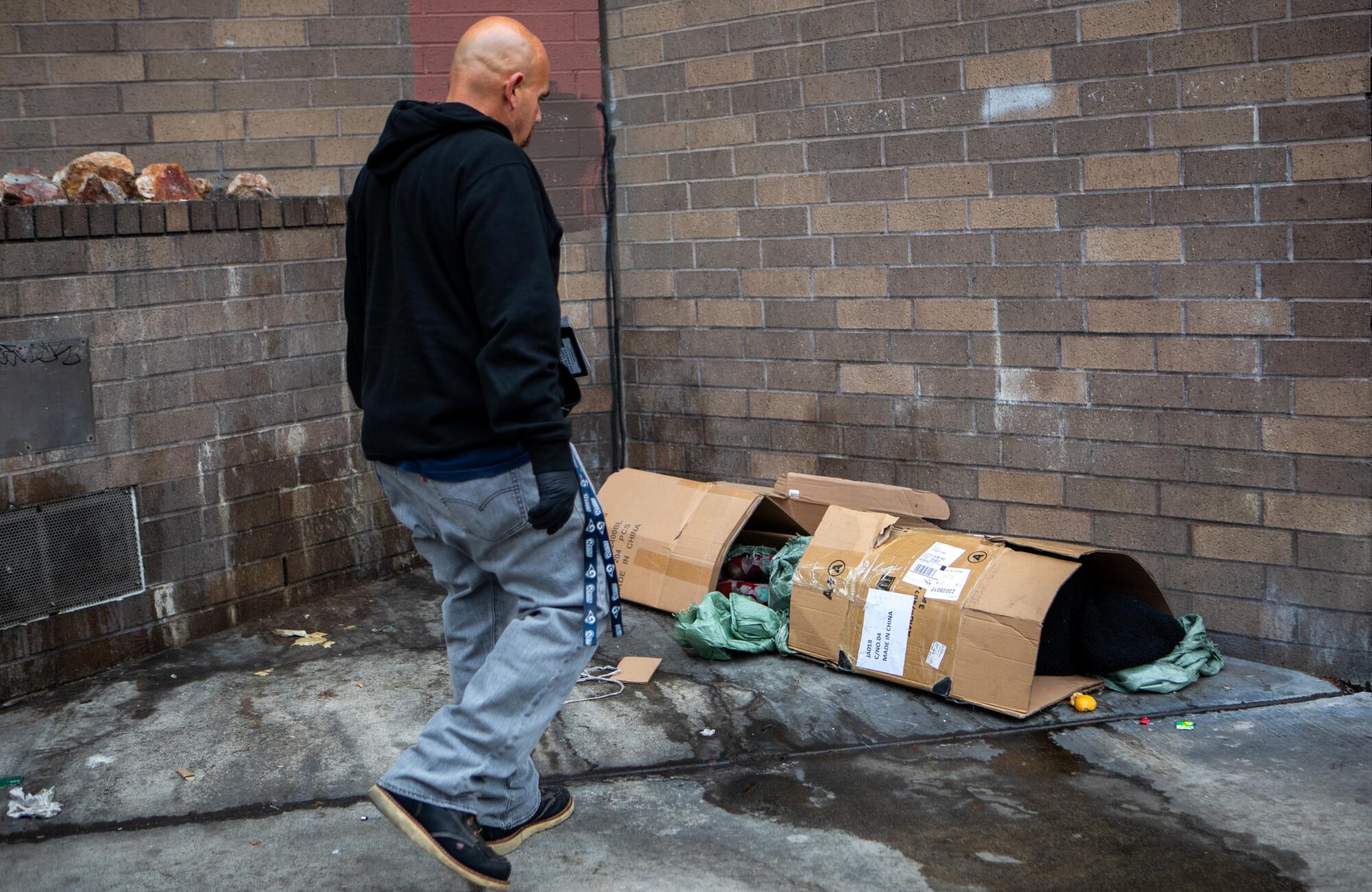
Preventing someone from ever losing consciousness with oxygen, in turn, means they can avoid having to turn to naloxone, which can hurl people into a painful withdrawal. That pain can spur people to take more drugs to alleviate it, which exacerbates the risk of them sliding back into an overdose when the naloxone wears off, See said. Because opioids can linger in the body longer than naloxone, people are supposed to be monitored for hours after getting the medication.
Willett stressed that whenever someone has stopped breathing and an overdose is suspected, naloxone should be given without hesitation. The Skid Row teams default to using naloxone when they find someone who isn’t breathing. But keeping oxygen flowing as they do so has helped them stabilize people faster and see quicker results — such as color coming back to the face — as the medicine takes effect, Willett said.
“When you see those results,” Willett said, “you don’t need to wonder if you need to give more naloxone,” and can avoid a second or third dose if it isn’t needed. And if someone has not yet stopped breathing, oxygen can reduce the likelihood that they will pass out and need more intervention.
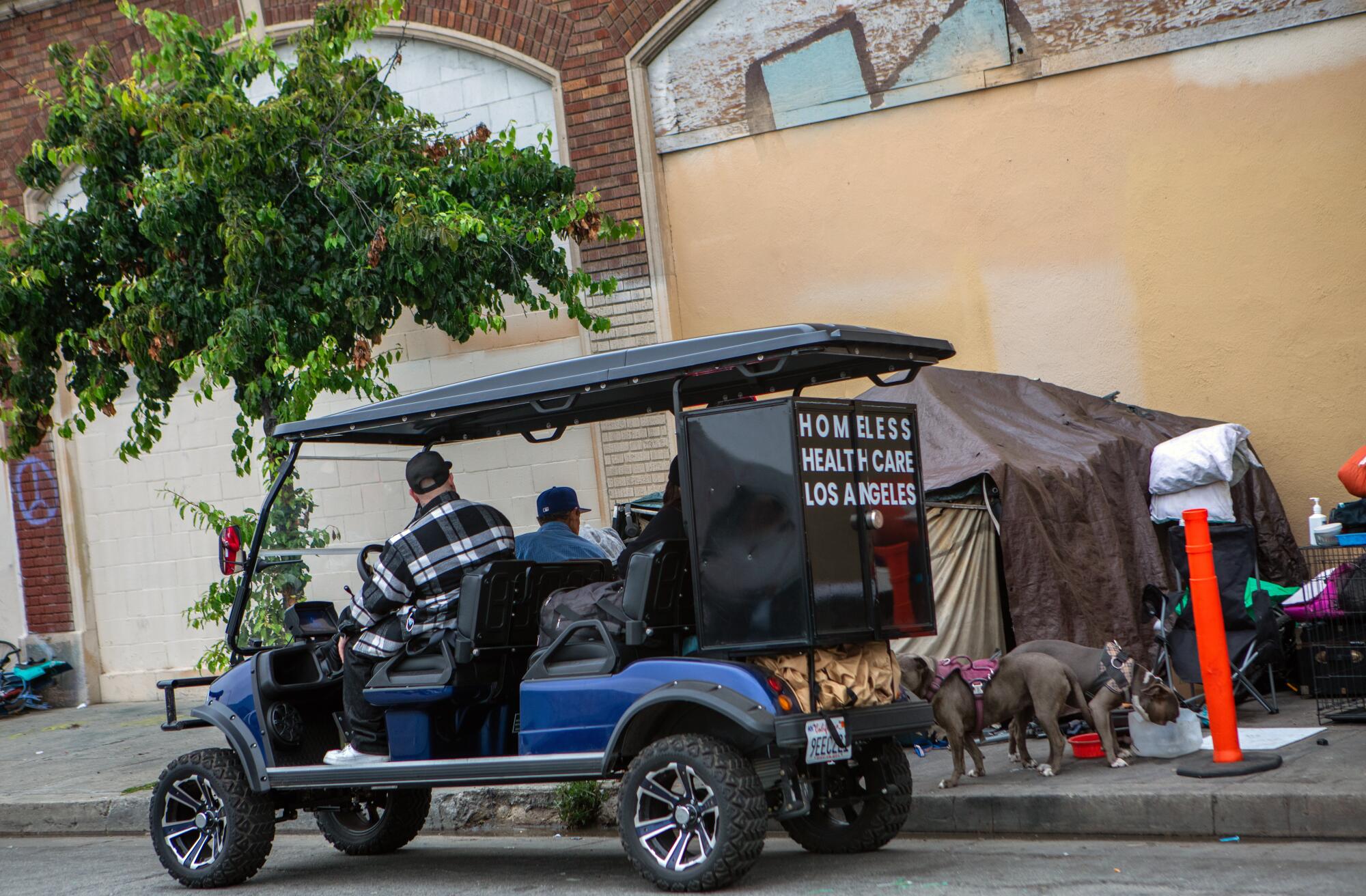
As they cruised past tents, graffitied dumpsters and the rainbow umbrellas of street vendors, Morales and Melendrez looked for people who were unnervingly still or strangely contorted as if they had fallen, then checked for the regular rise and fall of their breathing.
The teams are trying not only to stop deaths, but to save brain cells that can perish within minutes of oxygen deprivation. Researchers have found that getting too little oxygen during opioid use can lead to brain injuries and a host of other complications, including seizures and nerve damage. See argued that de-emphasizing the importance of oxygen had done survivors a disservice, by “discounting their right to have a functioning and healthy brain at the other side of their overdose.”
Melendrez, a Homeless Health Care overdose response specialist, said he had started using drugs before he was a teenager and continued for more than four decades before he went into recovery. At one point, he overdosed six times in three months. He had seen friends take a long time to revive, and “they don’t seem the same.”
“What we’re doing with the oxygen,” he said, “keeps them from getting to that point.”
When Melendrez and Morales found the man in the wheelchair he was breathing, but Morales was troubled to see his oxygen levels dipping. He had overdosed earlier in the day, according to another man on the street, who said he had used all his Narcan to revive him earlier. The man jerked away when Morales tried to place an oxygen mask over his face, so she and Melendrez stopped and instead encouraged him to sit up, which sent his oxygen level up again.
“Just take a deep breath,” Melendrez told him, squeezing his shoulder. “Take a deep breath, bro.”
Minutes later, the pulse oximeter was showing more reassuring numbers. Morales left the man with a plastic bag with gauze, alcohol wipes and other supplies for his wound and phoned the other Homeless Health Care team circling Skid Row, asking them to keep the man in the wheelchair on their radar.
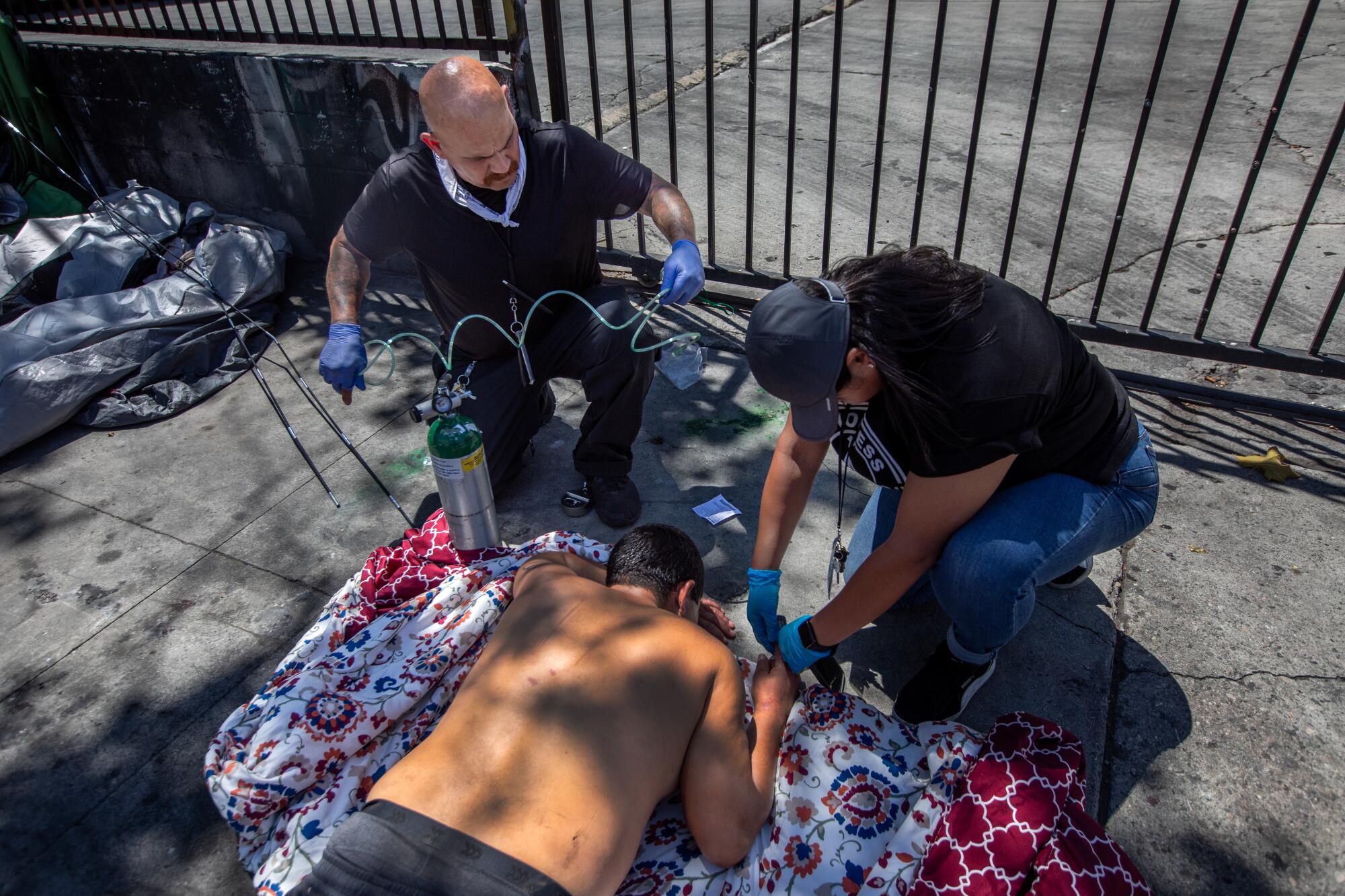
“We’ll be doing the same,” she told them.
Oxygen has often been more readily welcomed on the streets, since it won’t wrench someone out of their high. In July, Melendrez pulled over the cart on a sweltering day after spotting a shirtless man on his hands and knees, racked by stomach pain.
Morales knelt down and put a pulse oximeter onto his finger. His skin was alarmingly cool, she noticed, and he was sweating heavily. Morales worried he might be suffering from heat stroke. He also told them he had smoked fentanyl earlier in the day.
“Take a deep breath, big dog,” Melendrez told the man after they had turned him and placed an oxygen mask over his face.
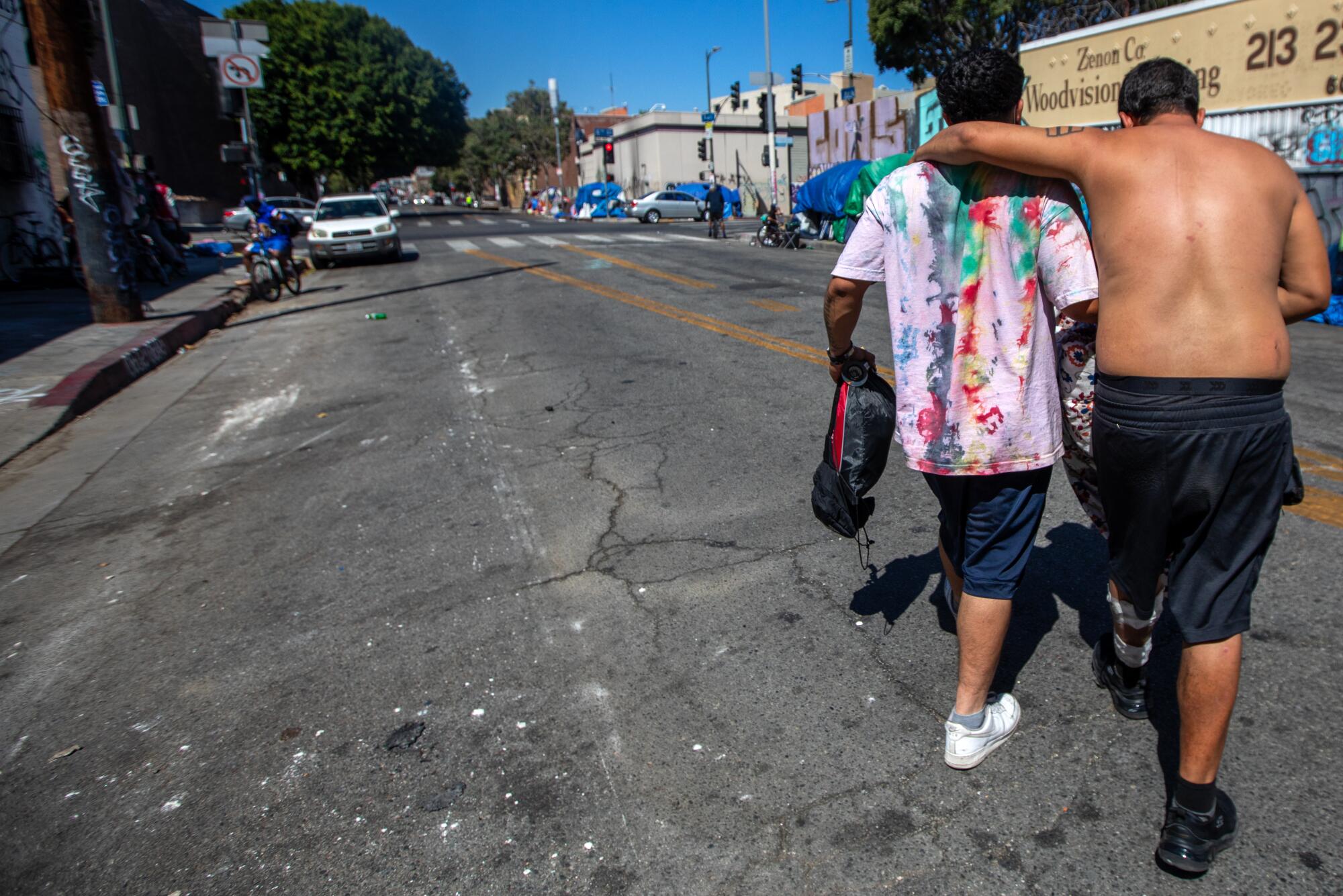
Friends of the man gathered and watched anxiously as they waited for paramedics. A passing woman strolled up and gave an impromptu blessing, concluding “In Jesus’ name, amen.” His heart rate was volleying up and down, Morales said, but his oxygen was good.
Fentanyl is fueling a surge in overdoses among unhoused people in Los Angeles, playing out as a daily battle for life and death in encampments.
When L.A. Fire Department paramedics arrived, Morales told them the man was not overdosing. The Homeless Health Care team left expecting that he would be taken somewhere for other medical care.
But later the man was still lying on the sidewalk in pain, complaining that paramedics had given him Narcan unnecessarily. After that happened, the man said, he decided not to go with the paramedics to the hospital.
As the teams hit the streets, they are trying to reach people who might be reluctant to seek other help. “They trust these people more,” said John Wright, one of the clients who joins the Homeless Health Care teams to help hand out supplies, pick up discarded syringes and broken glass, and look for people who need help.
“They’d rather wake up and see him standing there” — Wright gestured to Melendrez — “than a cop or an ambulance driver or something like that.”

Outside a Skid Row hotel, Morales stopped to talk to Brian Overton, who stood leaning on a weathered wheelchair. The 63-year-old nicknamed “Big O” greeted her happily, but was taken aback when a reporter asked him about being revived from an earlier overdose. He didn’t remember it.
“I don’t know if I ever thanked you for that,” he told Morales, his eyes wide. “Thank you very much.”
“You want a hug?” Morales asked.
“Yeah, yeah, sure do,” he said, and they hugged.
Then Morales got back in the cart to look for another life to save.
More to Read
Sign up for Essential California
The most important California stories and recommendations in your inbox every morning.
You may occasionally receive promotional content from the Los Angeles Times.
